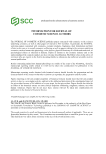315
J. Cosmet. Sci., 74.6, 315–334 (November/December 2023)
*Address all correspondence to Shangyi Fu, shangyi.fu@bcm.edu
Cosmetic Trends in Dermatology: A Systematic Review of
Topical Apple Derivatives in Treating Dermatologic Conditions
SHANGYI FU, CRISY ABRAHAM, ANUSHA MACNOJIA, ARUSA MACNOJIA, PIYA
MALHAN, JENNIFER ONWUKWE, SOPHIA FU, AMNA BASHIR, DANNY HUYNH
AND CARLY DUNN
School of Medicine, Baylor College of Medicine, Houston, TX (C.A., An.M., Ar.M., P.M., A.B.)
Human Genome Sequencing Center, Baylor College of Medicine, Houston, TX (Sh.F.)
John Sealy School of Medicine, The University of Texas Medical Branch, Galveston, TX (J.O.)
Glenda Dawson High School, Pearland, TX (So.F.)
Embedded Systems Engineering, Teal Systems, Houston, TX (D.H.)
Department of Dermatology, Baylor College of Medicine, Houston, TX (C.D.)
Accepted for publication October 02, 2023.
Synopsis
The apple has been used as traditional medicine throughout human history to treat different medical
conditions, including cardiovascular, diabetic, cancer, and inflammatory diseases. Recently, apple extracts
and derivatives have been increasingly used in commercial skincare products, touting their properties for
enhancing cosmetic effects on the skin. In this review, we systematically searched PubMed, analyzed for
inclusion and exclusion criteria, and found 14 articles that described the topical use of apple derivatives
on dermatological conditions. It was found that anthocyanin, a compound from apples, as well as apple
extract, were found to reduce transepidermal water loss. Procyanidin B-2 and AnnurtriComplex could prevent
androgenic alopecia in men and mice, and AnnurtriComplex was effective against chemotherapy-induced
alopecia. Phloretin 3’,3-disulfonate can attenuate ultraviolet (UV)-induced inflammation, and Annurca
polyphenolic extract was found to have a wrinkle smoothing and hydrating effect. However, apple cider
vinegar was found to be ineffective in treating atopic dermatitis and caused chemical burns, and apple extract
can also induce urticaria and dermatitis. These findings show promise in using apple derivatives for certain
skin conditions. However, testing and regulations are needed to prevent adverse effects.
INTRODUCTION
“An apple a day keeps the doctor away” is a centuries-old proverb that is used to encourage
health and prosperity by both medical and lay people. It highlights the extensive use of
apples, otherwise known as the genus Malus, in not only maintaining a healthy lifestyle
but also in treating various medical symptoms, including those commonly associated
with dermatological disorders.1 Lately, the use of apple derivatives has increased in the
commercial skincare market, prompting a high demand for more information about this
product to elucidate whether it has potentially beneficial dermatological effects.
J. Cosmet. Sci., 74.6, 315–334 (November/December 2023)
*Address all correspondence to Shangyi Fu, shangyi.fu@bcm.edu
Cosmetic Trends in Dermatology: A Systematic Review of
Topical Apple Derivatives in Treating Dermatologic Conditions
SHANGYI FU, CRISY ABRAHAM, ANUSHA MACNOJIA, ARUSA MACNOJIA, PIYA
MALHAN, JENNIFER ONWUKWE, SOPHIA FU, AMNA BASHIR, DANNY HUYNH
AND CARLY DUNN
School of Medicine, Baylor College of Medicine, Houston, TX (C.A., An.M., Ar.M., P.M., A.B.)
Human Genome Sequencing Center, Baylor College of Medicine, Houston, TX (Sh.F.)
John Sealy School of Medicine, The University of Texas Medical Branch, Galveston, TX (J.O.)
Glenda Dawson High School, Pearland, TX (So.F.)
Embedded Systems Engineering, Teal Systems, Houston, TX (D.H.)
Department of Dermatology, Baylor College of Medicine, Houston, TX (C.D.)
Accepted for publication October 02, 2023.
Synopsis
The apple has been used as traditional medicine throughout human history to treat different medical
conditions, including cardiovascular, diabetic, cancer, and inflammatory diseases. Recently, apple extracts
and derivatives have been increasingly used in commercial skincare products, touting their properties for
enhancing cosmetic effects on the skin. In this review, we systematically searched PubMed, analyzed for
inclusion and exclusion criteria, and found 14 articles that described the topical use of apple derivatives
on dermatological conditions. It was found that anthocyanin, a compound from apples, as well as apple
extract, were found to reduce transepidermal water loss. Procyanidin B-2 and AnnurtriComplex could prevent
androgenic alopecia in men and mice, and AnnurtriComplex was effective against chemotherapy-induced
alopecia. Phloretin 3’,3-disulfonate can attenuate ultraviolet (UV)-induced inflammation, and Annurca
polyphenolic extract was found to have a wrinkle smoothing and hydrating effect. However, apple cider
vinegar was found to be ineffective in treating atopic dermatitis and caused chemical burns, and apple extract
can also induce urticaria and dermatitis. These findings show promise in using apple derivatives for certain
skin conditions. However, testing and regulations are needed to prevent adverse effects.
INTRODUCTION
“An apple a day keeps the doctor away” is a centuries-old proverb that is used to encourage
health and prosperity by both medical and lay people. It highlights the extensive use of
apples, otherwise known as the genus Malus, in not only maintaining a healthy lifestyle
but also in treating various medical symptoms, including those commonly associated
with dermatological disorders.1 Lately, the use of apple derivatives has increased in the
commercial skincare market, prompting a high demand for more information about this
product to elucidate whether it has potentially beneficial dermatological effects.








































































